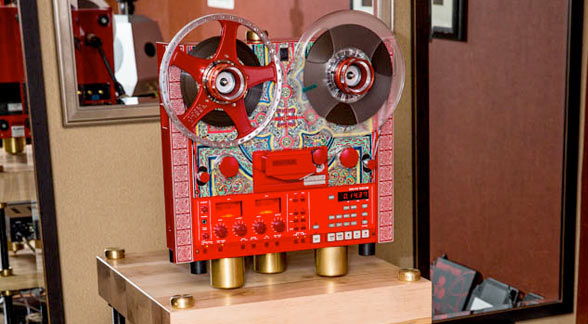Making Copies…Analog Style Part I
I’ve tried in several previous posts to establish that analog tape is NOT capable of delivering “the highest quality reproduction possible”. If by “highest reproduction possible” supporters of analog tape mean a format that can handle real world dynamics and the entire frequency range. It might be possible to state that analog tape is the highest ANALOG recording and reproduction format…certainly better than vinyl LPs. But once again this places a completely artificial divide between analog and digital sound when experienced by the human auditory system. Your ears and brain don’t care how you stored the sound information, they respond to the rarefactions and compressions in the atmosphere. That’s it.
Analog tape is a wonderful format, to be sure. In fact, I will be recording a solo jazz pianist next week using both 96 kHz/24-bit PCM digital equipment AND my trusty NAGRA IV-S analog recorder running at 15 ips. I purchased $300 worth of 1/4″ tape just yesterday for the project. It’s been a while since I’ve used the machine and I’ll report on the sonic comparisons when I finish the project. This is not an AIX Records project…I’m simply doing the engineering for a client that heard our piano sound and was impressed.
I recently read a show report by Scot Hull of Part-Time Audiophile praising the virtues of analog tape. His opening paragraph reads as follows:
“If you’re into analog, you really ought to be into tape. It’s not that analog tape machines (necessarily) sound better than turntables, but rather that the tapes you can get these days sound so much better than the LPs that it’s not even funny. Ever heard the term “master tape”? Well, these days you can get one-off masters or one-off from the one-off. The result? Wow. Dynamics. Breathtaking realism. None of the compression that plagues “modern” recordings. No arbitrarily bizarre remixing, remastering, or other shenanigans. Just the way it was meant to be … but I wax poetic.”
The concepts in these few sentences got me thinking about the concept of “master tapes” and what the production chain is in creating an analog copy of an existing analog master. I’ve touched on this before but it seems worth repeating because some of the ideas or descriptions in Scot’s statement run counter to reality.
First, we have to carefully define what “master tape” means. Is it the tape that went across the record head while the musicians were performing? Or perhaps is the tape that was copied from the master and then edited? It could even be the production “master” that is made from the edited version from which vinyl LP or even CDs are created. Then again, it might be the “mastered master” after the project has been run through the mastering process. As I hope you can see there is plenty of room for interpretation and confusion in the simple concept of a “master” tape.
Let’s continue with things that aren’t masters and see if that helps clarify things. ANY ANALOG TAPE THAT YOU CAN ACQUIRE OR HAVE EXPERIENCED AT A TRADE SHOW IS A COPY (probably a copy of a copy of a copy)! Record companies, no matter how large or small they are, DO NOT let their “master” tapes leave their possession. So the concept that Scot heard a “master copy” or a “one-off master” is the result of marketing and spin. He heard a second or third generation copy of the production “master”, which is actually a couple of generations down from the session “master”.
Can analog tape copies sound terrific? Yes, of course. But they are not capable of “breath-taking realism” and the dynamics are nothing to brag about…except perhaps compared to vinyl LPs (potential dynamic range of analog tape is 60-65 dB). But if you’ve read any number of my previous posts you know that commercial music doesn’t require much dynamic range…so no problem. However, just try recording the Ravel “Bolero” or Stravinsky’s “Firebird Suite” on analog tape and see how much compression you have to use to get everything on the master.
Check in tomorrow for the continuation of this thread.

